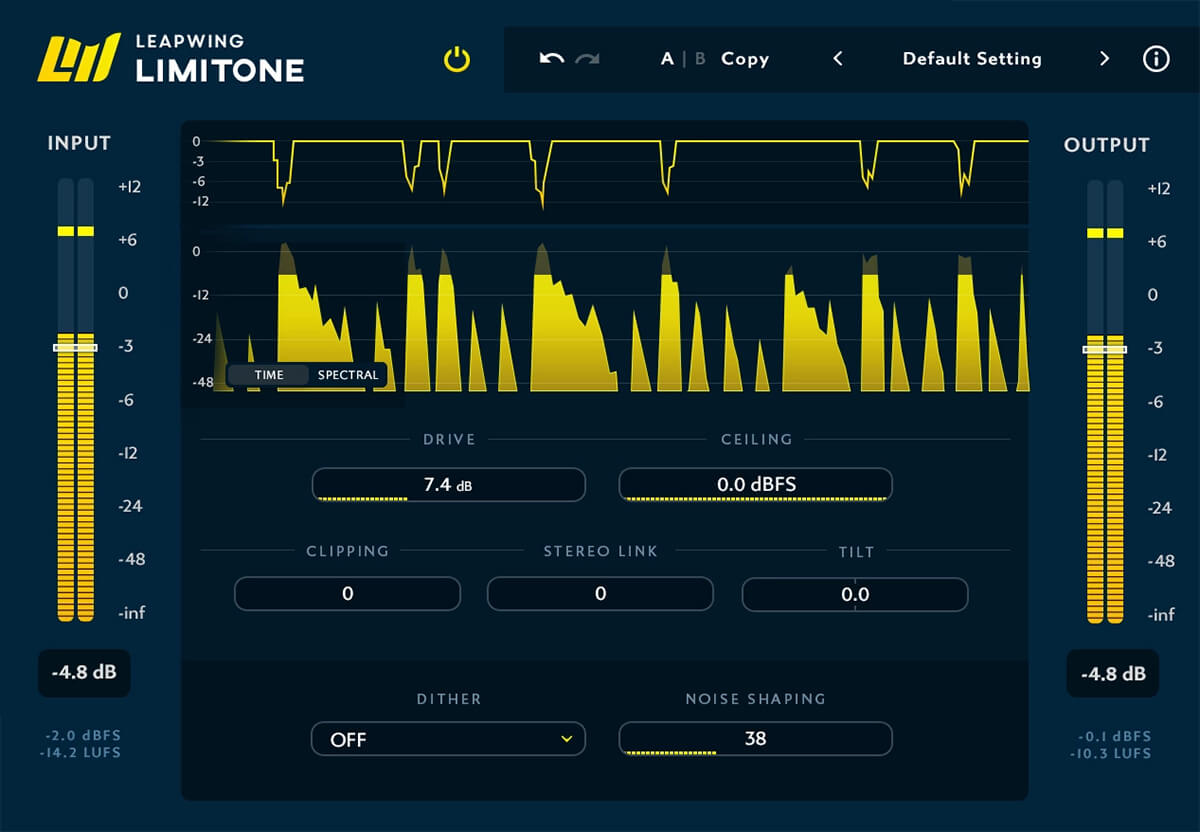Leapwing Audio LimitOne
Limiter & Clipper Plugin
A Spectral Approach to Limiting and Clipping
Audio limiting is the art of managing and controlling sound energy.
Often the goal is to increase loudness by changing level dynamics in the most transparent way possible.
Historically, this was done by using an electric circuit that follows the envelope of an audio signal and steers a variable gain to reduce peaks and boost low levels.
These methods were later emulated in the digital domain and many variations and flavors have been created since.
LimitOne is different, the goal was not to eliminate all other clippers or limiters out there, as they all add their own color, but to develop a novel approach and do things in a different way, allowing you to get results that weren’t previously possible.
We found inspiration in two-stage limiter methods and multi-band compressor designs, in how clipping adds color and punch, and we also took note of the problems and artifacts that some processing introduces.
Then we imagined what an easy-to-use tool would look like if we would not limit ourselves to existing methods.
This led to the idea of a hybrid algorithm that combines the advantages of digital signal processing in the frequency domain and time domain.
Unique Hybrid Algorithm Design
Provides adaptive dynamics control in both frequency and time domain.
LimitOne consists of two main algorithms, codenamed Pufferfish and Hedgehog.
Pufferfish
A frequency domain processor that aims to optimize the energy distribution across the whole frequency spectrum for a given Drive and Ceiling level.
Another way to describe it: a fully automated adaptive multi-band dynamics controller.
Hedgehog
A time domain processor whose main purpose is to shape transients.
It uses an adaptive control system that shares the same two parameters, Drive and Ceiling level.
System Requirements
- MacOS 10.13 High Sierra and above
- Windows 8 and above (64-bit only)
- Intel, AMD, or Apple Silicon
- Includes 2 activations per license
Plugin Formats
AAX Native, AU, and VST3
User Manual




